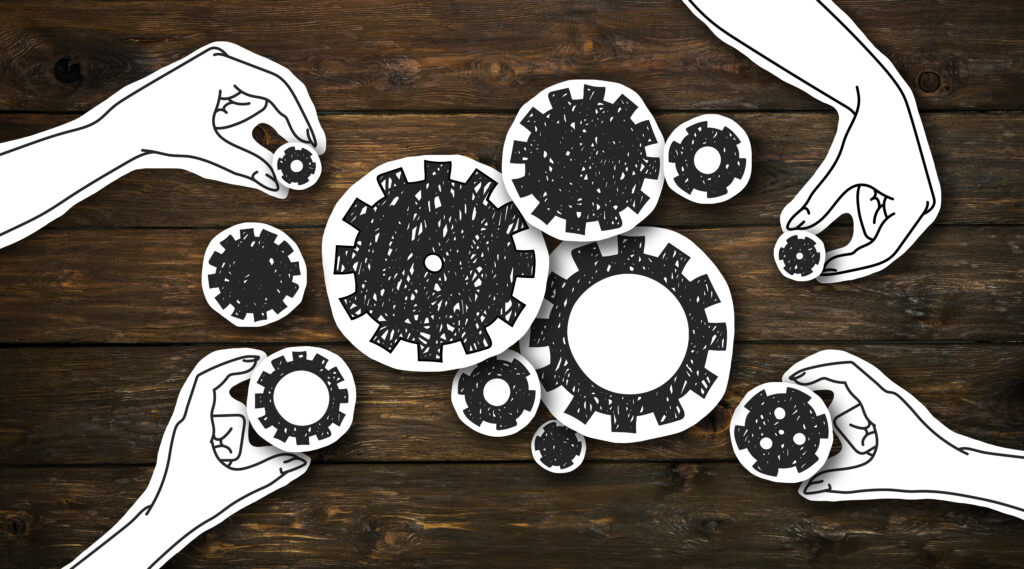When I was studying Industrial and Systems Engineering at Georgia Tech, I fell in love with the logic of systems. I was fascinated by how every part of a process, no matter how small, connected to something bigger. Whether it was a supply chain, a factory floor, or a software workflow, I learned to look at the whole picture—to find the inefficiencies, the bottlenecks, the parts that needed fixing. What I didn’t realize back then was how those same problem-solving tools could be used outside of business. Not just to improve margins or meet production goals, but to solve human problems.
Over time, my career took me from corporate finance to operations to consulting. I worked with companies that needed help making things run better and faster. But in the background, I found myself drawn to a different kind of challenge: helping people. Veterans who couldn’t find jobs. Families stuck in cycles of poverty. Communities where opportunity was unevenly distributed.
It might sound surprising, but the same principles I learned in engineering applied here too. Systems thinking isn’t just for machines or spreadsheets. It’s for people. And when we apply it thoughtfully, we can make real, lasting change.
Seeing the System Behind the Problem
One of the biggest mistakes we make when tackling social issues is treating symptoms instead of systems. If someone can’t find a job, we assume it’s a personal failure. If a school underperforms, we blame the teachers. If housing is unaffordable, we look at prices without understanding why they’re rising.
But engineers are taught to look deeper. We ask, “What’s causing this?” and “How do the parts interact?” That mindset is incredibly powerful when applied to issues like homelessness, workforce development, or education.
Take workforce development, something I’ve been heavily involved with in Fulton County and through veteran-focused programs like AloriCares. On the surface, it looks like a training issue. But when you really dig in, you see it’s a transportation issue, a childcare issue, a mental health issue, and yes, a systemic hiring bias issue. If you only fix one part, the whole thing still breaks down. But when you apply systems thinking, you begin to build integrated solutions that address the full context of people’s lives.
Veterans and the Value of Structure
I’ve always had a deep respect for veterans. They come from a culture of discipline, structure, and accountability—things I value highly. But many of them struggle when transitioning to civilian life, not because they lack skills, but because the systems designed to support them are fragmented or overly complex.
That’s one reason I helped create a training center specifically for service-disabled veterans in Atlanta. We didn’t just offer job skills. We looked at the full picture—what kind of work matches their strengths, how to communicate military experience in business terms, how to navigate life outside the structure of the military.
That project taught me that social problems often persist not because people don’t care, but because the systems around them are poorly designed. Veterans don’t need handouts. They need efficient, accessible pathways back into meaningful work. That’s a systems issue, not a charity issue.
From Theory to Action
One of the things I appreciate most about engineering is that it’s inherently practical. We’re not just studying problems—we’re solving them. That’s the spirit we need more of in our social policies and programs.
When I served on the Steering Committee for the Atlanta Housing Authority, we weren’t just looking at buildings. We were looking at lives. We had to consider transportation, schools, job access, and community engagement. That’s systems thinking in action. You can’t just fix the housing. You have to fix the system that surrounds it.
The same applies in the private sector. Companies that embrace purpose-driven strategies—whether through inclusive hiring or community engagement—aren’t just doing the right thing. They’re doing the smart thing. Because when you build strong systems, everyone benefits. Turnover drops. Productivity rises. Brand loyalty grows.
Why Engineers Need to Show Up
There’s a common perception that engineers belong in labs or behind screens. I’d argue the opposite. Engineers belong in boardrooms, city councils, and nonprofit leadership. We need more people who understand how systems work influencing how policies are made and how communities are served.
The problems we’re facing today—economic inequality, environmental sustainability, healthcare access—are all complex systems challenges. They require analytical thinking, evidence-based solutions, and the humility to test, learn, and iterate. That’s what engineers do best.
I didn’t set out to become a community advocate. But the more I’ve seen the overlap between business challenges and human challenges, the more I believe that the tools I learned in engineering have a role to play in making the world better—not just more efficient.
Purpose Beyond Process
At this stage of my life and career, I still care deeply about systems optimization. But now I’m more focused on optimizing for impact, not just output. That means helping companies design hiring practices that give overlooked people a chance. It means using analytics to improve how cities serve their residents. It means working with organizations that believe success includes social value.
If there’s one thing I’ve learned, it’s that problems don’t get solved in isolation. They get solved by looking at the whole picture—by understanding how things are connected and how small changes can create ripple effects. That’s the heart of systems thinking. And that’s why I believe engineering has a vital role in shaping a more just, inclusive, and sustainable future.
The blueprint is there. We just have to be willing to build beyond the boundaries we’ve gotten used to.
